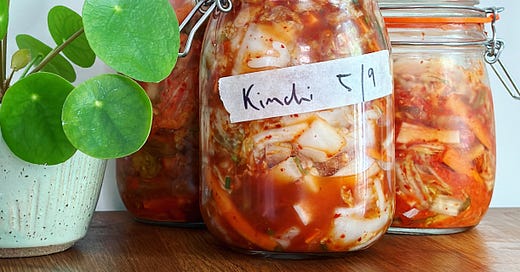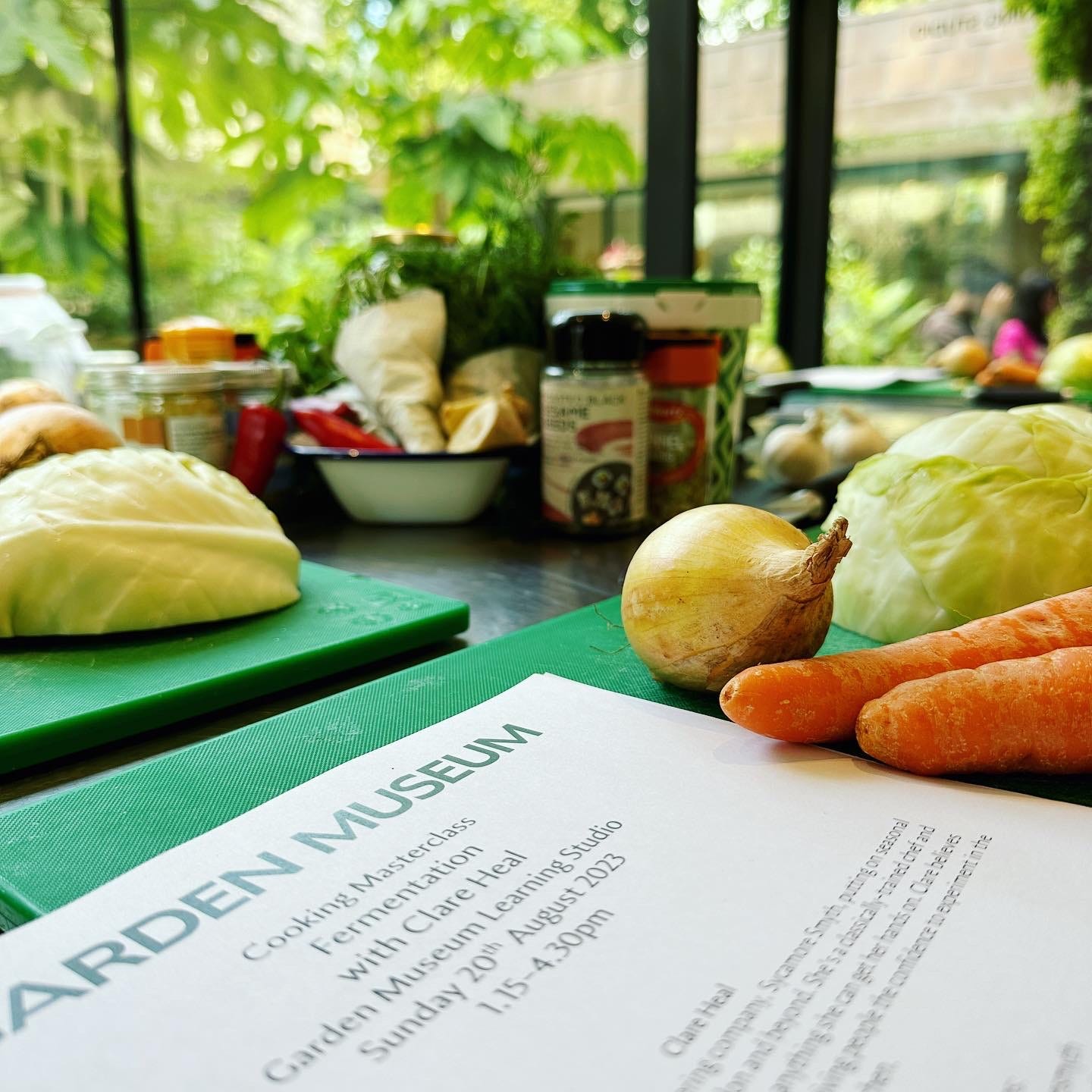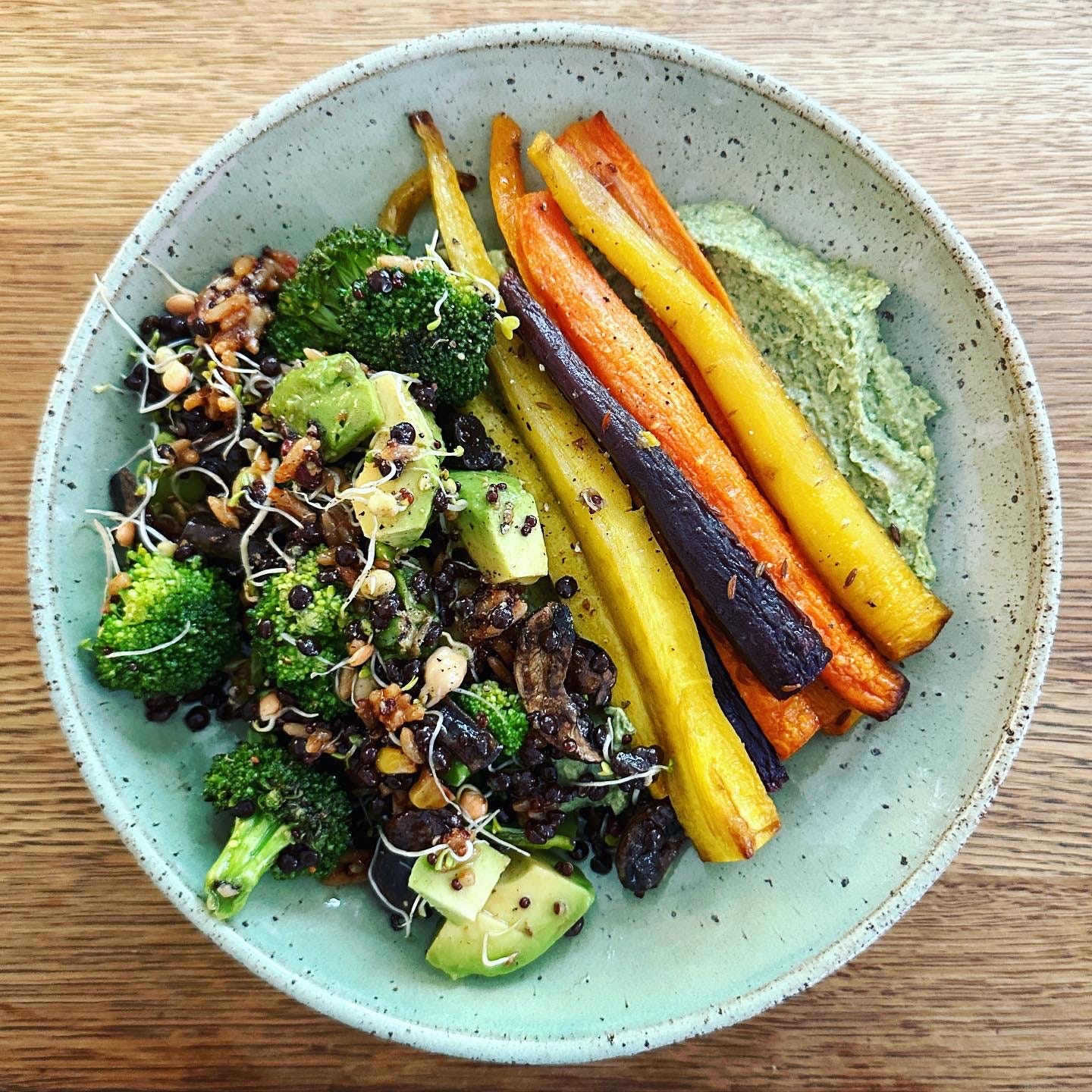In Good Taste #15: Kimchi
Bumper back-to school issue including an introduction to the funky Korean ferment; cumin-roast carrots bonus recipe; cultural highlights of the summer
Well, hello there! How are you?
Good I hope. Thank you so much for being here.
(Not up for the chitchat? Completely get it. Click email title to go to the web-based version then jump straight to the Kimchi recipe, carrot recipe or Cultural Fun.)
I see that quite a few new subscribers have arrived despite my summer silence. Firstly: thank you and welcome! Secondly: a brief explanation of what goes on here. We’re talking food in general and lacto-fermentation in particular. Each issue of the newsletter is stand alone. They all contain a bit of contextual chat and a recipe followed by a section called Cultural Fun in which I make an only-slightly-tortured link between the microbial cultures of fermentation and (high and pop) culture in general in order to give you a few personal recommendations for exhibitions, books, films, podcasts etc. that I’ve enjoyed.
But if you go back through the archive, you’ll find a sort of introductory course to lacto-fermentation, should you want one. We began with kraut and moved on to brine pickles, covering the basic science and other technicalities as we went. I tend to move between a base ferment recipe and various ideas of how to vary it or cook with it.
Today we’re beginning an exploration of kimchi and in future issues we’ll look at some variations and ideas for what to do with your jars of funky cabbage. I have lots of ideas of what’s to come after that too including explorations of fermenting kit and which bits are worth it, introductions to kombucha, kefir and preserved citrus as well as plenty more recipes for lacto fermented things and other stuff too. I hope you’ll stick around. Or subscribe if you haven’t already.
Anyway. I hope everyone had good summers. What did you get up to? I really enjoyed cooking my supper clubs at Lizzy’s On The Green so many thanks if you came to any of those dates. The weather didn’t always play ball but the vibes remained sunny.
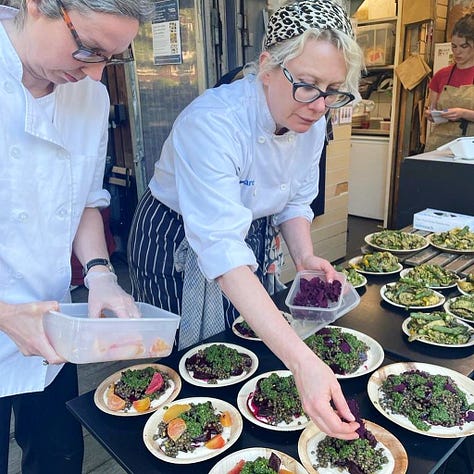
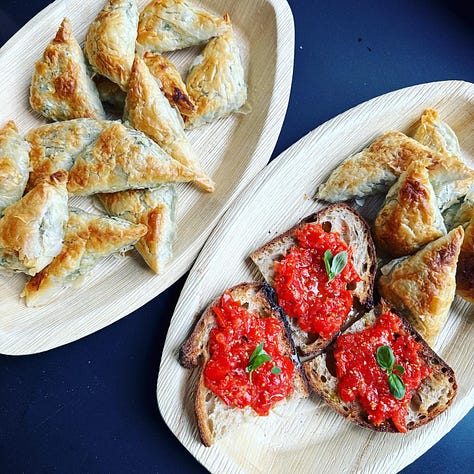
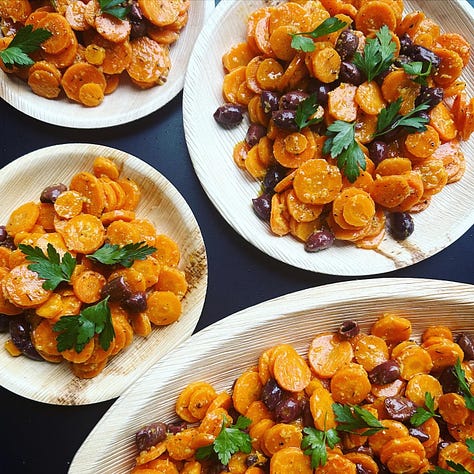
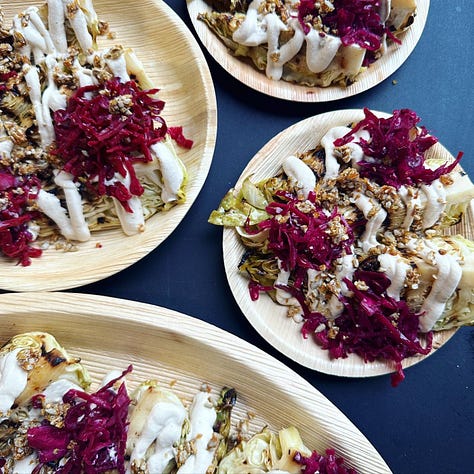

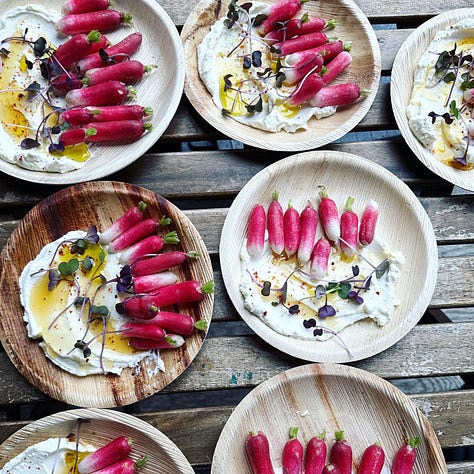
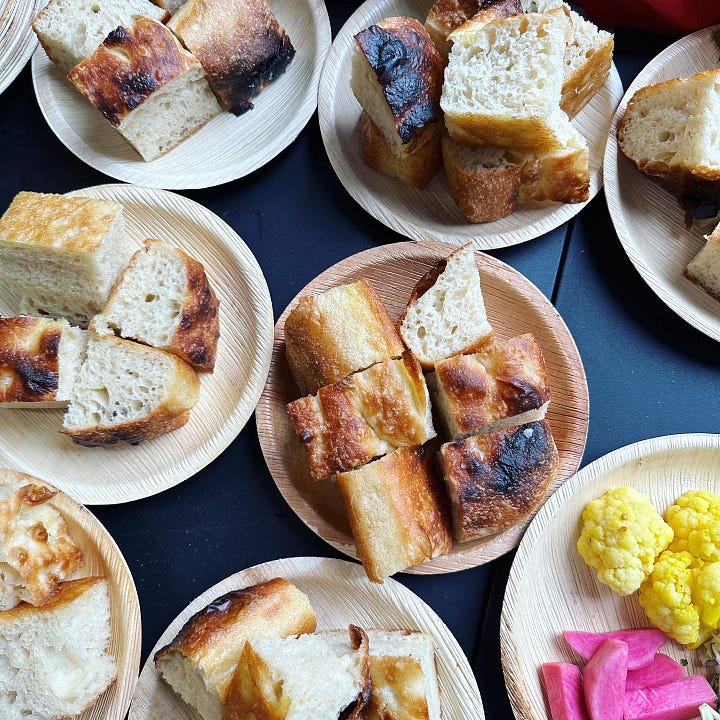
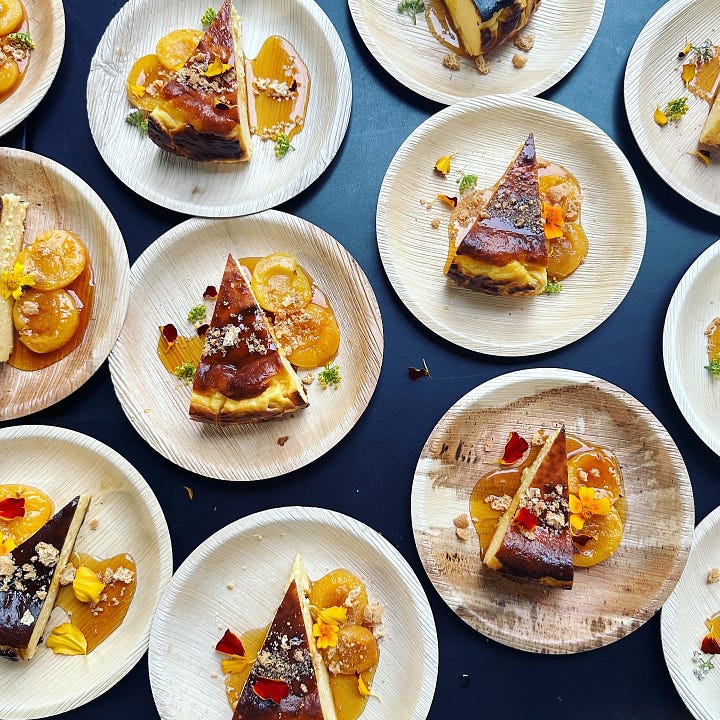
And I ran another workshop at the Garden Museum as part of their Masterclass series which was great fun. The teaching space there looks out onto the central courtyard and is a lovely place to spend some time.
Non-work-wise, James and I had as few days in Yorkshire seeing his family who live near Wakefield and also a few days in Sheringham, Norfolk. I’ve said before how much I love the Hepworth Wakefield and the Yorkshire Sculpture Park but we did a few different thigs this time too, visiting the National Coal Mining Museum, the Wakefield Museum and the Humber Bridge.
I’d recommend the NCM where you get to go down into a disused mine with an ex-miner as a guide. And I enjoyed the local museum too, particularly the history of the area’s manufacture of sporting goods. No, really! There were once large factories there turning out leather footballs, cricket bats, hockey sticks and so on. Sykes Sports Goods merged with Slazenger in the 1940s and though the factory is long gone from the area, an independent sports and social club still retains the latter’s name. The men of James’ famil are traditionally hockey-players with my father-in-law not hanging up his stick until well into retirement. He is still a regualr at “down Slaz” so it was interesting to get a bit of background.
TBH I have no idea why we went to the Humber Bridge since both James and his mother really don’t like heights. But we went anyway and walked across and it was very impressive.


Norfolk was beautiful. We swam in the sea every day, ate lots of crab and lobster (shout out CA Seafood) fabulous pizza from Stubby’s and saw some seals.
We also had some time at home doing bits and piceces around the house (although far less than planned, obviously), playing board games and doing London things. Highlights of the last two in this week’s Cultural Fun.
Coming Up
I’m back at the Garden Museum in Vauxhall later this month, taking part in their (free!) Branch Out programme. I’ll be doing two “creative krauts” sessions on the 28th. One 11am-12pm and one 1pm-2pm. Do come along!
I’ve also go classes coming up at Borough Kitchen on the 12th September, 3rd, 10th and 11th October and 2nd November. More Dusty Knuckle dates are coming soon too, as well as some home kitchen classes.
I’m also looking for (indoor!) venues for autumn/winter supper clubs and there will be, I hope, some other exciting news soon too. Make sure you’re subscribed to be the first to know about all of it.
Private lessons are also available, in your home or mine. A voucher makes a great present. Just saying…
Kimchi 101
OK. Enough chat about things that are not kimchi. Let’s get into it.
Now, I am not Korean (no kidding) and have not been to Korea. One could study kimchi for a lifetime and still have more to discover so I do not pretend to be an authority. But I have made and eaten a lot of it and can help you start out on your kimchi journey.
There are a huge variety of styles from all across Korea using different vegetables according to local availability and climate. You can get kimchis made with radish, cucumber, seaweed, mushrooms, chestnuts and on and on. But the best known and most iconic is the funky, spicy, bright red baechu kimchi - “baechu” is the Korean word for what, in the UK, we commonly call “Chinese leaf” or “Napa cabbage”.
Kimchi is so culturally important to Korea that kimjang, the autumn festival of communal kimchi-making, is on UNESCO’s Intangible Cultural Heritage List. A special, space-safe Kimchi was developed for Yi Soyeon, the country’s first astronat when she blasted off to the International Space Station in 2008, since it was inconcieveable that a Korean be without kimchi, even if she was no longer on Earth.
If you want to know more about the history and cultural context of Kimchi then I heartily recommend Of Cabbages and Kimchi by James Read (the man behind the Kim Kong Kimchi brand that you may have seen in UK delis). It’s a really wonderful book with great recipes and incredible artwork by Marija Tiurina. I couldn’t resist buying a print of her interpretation of Yi Soyeon.
Kimchi is both similar and dissimilar to kraut (see here for an introduction to that topic, some variations and a recent favourite). Similar in the sense that is is shredded veg transformed by lactic acid bacteria, into something more delicious. Also in that a salty, oxygen-scarce environment is key for that to happen. However, there are a few extra complexities. More ingredients at play, even in the simplest recipe and, crucially, an extra salting step.
For most krauts we simply add salt to shredded vegetables (usually around 2.5% of the vegetables weight in salt), massage it a bit or wait for the salt to draw out water from the veg and form a brine, chuck in any extra flavourings we fancy and pack it into jars. In kimchi there is an initial salting in a much stronger brine. This is mainly for texture - it draws out water and makes the vegetables firmer. This strong brine is then rinsed off before a paste, containing more salt (usually in the form of salted/fermented seafood) and other flavourings is added.
So slightly more complicated but by no means anything to be scared of.
In baeucu kimchi the main flavours come from gochugaru, the bright red Korean chilli pepper flakes, garlic, ginger and that salty seafood (vegan versions are possible - see the notes on my recipe for more information). Of all the kimchi imgredients gochugaru is probably the hardest to get hold of but you’ll find it in Asian supermarkets and it’s easy to find online suppliers too. It’s worth tracking down becasue other chilli flakes just won’t taste the same. Gochugaru has a hint of sweet smokiness and really is the definitive flavour of baechu kimchi.
The salt traditionally comes from seafood: salted squid or oysters or many other varieties. You can use shrimp paste or jars or salted shrimp, both widely available in Asian supermarkets. All of these bring umami too. The recipe below is the one I teach in my classes where I’m not able to take up fridge space with pungent ingredients. It uses fish sauce which is easy to get hold of and does the same job.
Recipe: “Mak” Kimchi
Makes approximately 1l jar, depending on the size of your cabbage. Scale up or down accordingly.
The most traditional Kimchi is made with quartered cabbages but this takes a long time to brine, usually overnight. "Mak" means "quick" or "careless" and this recipe comes together relatively simply in about 2 hours - most of that time completely hands off - but is no less delicious for it.
Ingredients
1 head Chinese/Napa cabbage
40g flaky sea salt
100g mooli (approx 1/3)
1 carrot
10g glutinous rice flour (optional - see note)
1⁄2 inch ginger
6 cloves garlic
1 tsp sugar
2 tbsp gochugaru Korean chilli flakes (or to taste)
3 tbsp fish sauce (for a veggie option replace with 2 tbsp soy sauce and 1 tbsp miso)
4 spring onions
Method
Slice the cabbage in half through the root and firm white part, stopping about halfway up where the leaves begin to get frilly. Get your thumbs into the opening and pull the cabbage in half. Doing it this way keeps the frilly inner leaves more intact than slicing through the whole thing. Also, I find it is deeply satisfying in an ASMR kind of way. Use the same method to divide the halves lengthways again into quarters.
Slice the cabbage quarters into bitesize pieces. I like them quite chunky, maybe an inch and a half. Smaller, more shredded pieces will make a more homogenously textured kimchi. It’s completely up to you. If you don’t have a pickle weight, remember to save the quartered root.
Put the pieces of cabbage in a bowl, toss with the salt and a small splash of water (just a couple of tablespoons) and set aside for 90 minutes – 2 hours.
Peel and cut the mooli and carrot into batons. Again, I like them quite chunky to provide crunch. More matchsticky bits will make a more evenly textured kimchi. You do you. Add them to the cabbage and mmix through. Occasionally
come back and toss the vegetables again to make sure everything gets equal exposure to the brine which is produced.
Meanwhile put the glutinous rice flour in a pan and add 80ml cold water. Whisk to combine then bring to a boil over a medium heat. It will thicken and look like wallpaper paste. Set aside to cool.
Peel and crush the garlic and ginger. Add it to the rice flour porridge along with the gochugaru, fish sauce (or soy and miso) and sugar. Alternatively just blend the rice flour porridge with the other ingredients in a food processor.
Finely slice the spring onions, whites and greens. Add to the paste and set aside until needed.
Once the cabbage has been brining for a couple of hours you will notice that it has wilted and shrunk. The other veg will be less visibly affected but will also have given out some water. Drain them in a colander over the sink and rinse thoroughly. Rinse the bowl too. Taste a little bit of cabbage. A hint of salt is fine but you don’t want loads. Give everything a squeeze to remove as much water as possible but don;t manhandle too mkuch or you will make the leaves floppy. Return the veg to the bowl.
Add the chilli paste to the caggage, gently massaging the leaves until it is evenly distributed (you can use gloves to go this if you like, I would recommend it). Pack into a clean jar along with any liquid remaining in the bowl. Use a pickle weight or a couple of bits of the root to keep everything under the brine and seal the jar. Place it on a plate or tray to catch any leakage and leave at room temperature, out of direct sunlight.
Check the kimchi every day, opening the jar to let the gas escape and tasting a little bit. It will be pretty active in the first couple of days so be careful when opening it. Don’t wear you best silk blouse basically. When it is as sour and funky as you like (anywhere from 2/3 days to 2/3 weeks), move it to the fridge. This won’t stop the fermentation but will slow it right down. The kimchi will keep in the fridge indefinitely.
Notes (If Ifs And Ands Were Pots And Pans…)
The rice flour porridge isn't crucial but helps the chilli paste coat the cabbage. Glutinous rice flour is not the same as the rice flour you’ll find in the baking aisle. Like gochugaru, you’ll find it in Asian supermarkets. You can use cornflour, portato starch or tapioca starch instead, all prepared in a similar way. I have not tried wheat flour but am told it does a similar job. You want to stick with roughly that 1:8 ratio. Anything that makes a nice pasty consistency so the flavours evenly coat the vegetables. Or you can leave it out and just thin your chilli , garlic, ginger mixtuyre with a little water or stock.
As kimchi develops it will get funkier then more acidic. There will also be more brine in an older jar of kimchi as water continues to be drawn from the vegetables. Generally kimchi is eaten it as a side dish when it’s fresher and cooked wth it when it’s older. I’ll be sharing a few things to do with your kimchi over the coming weeks Cabbages and Kimchi has a wonderful sppicy pork stew recipe and also introduced me to the fabulous idea of kimchi pickled eggs.
Recipe: Cumin-Roast Carrots
This is barely a recipe. More a good idea. But it’s delicious and useful so I share it with you.
Ingredients
Carrots
Olive oil
Cumin seeds
Salt
Black pepper
Method
Heat oven to 180°C.
Peel the carrots and slice them lengthways. Medum ones in half, larger ones in quarters. Tiny little ones you can leave whole.
Lay them on a baking tray. Don’t crowd them, use two trays if you need to or they won’t colour properly. Drizzle generously with olive oil, sprinkle with cumin seeds, season with salt and pepper and toss to coat. I’d say approximately a 2 tsps of cumin seeds per tray of carrots.
Roast for approx 30 mins or until completely soft and beginning to colour around the cut edges and tips. Toss a couple of times during cooking.
Serve hot as a side dish (I like them with roast lamb or alongside cauliflower cheese) or cold in salads and grain bowls. They’ll keep in the fridge for about a week.
Notes (If Ifs And Ands Were Pots And Pans…)
Always make more than you think you’ll need. The carrots shrink quite a bit during cooking and also are so sweet and moreish that everyone always eats more than you expect. Even if they don’t you’ll be grateful for the leftovers.
I love these in a salad with grains, rockets, tahini dressing and pomegranate seeds. Maybe a bit of crumbled feta too.
Cultural Fun
As part of our Summer London Funtimes we went to the new(ish)ly reopened National Portrait Gallery and really liked it. Tracey Emin’s doors are wonderful and it’s nice to see more women and people of colour, not just in the Reframing Narratives: Women In Portraiture project but throughout the museum.
A highlight for me was this little section including Virgina Woolf by Vanessa Bell as well as Vanessa Bell by Duncan Grant and I’ve always loved the portrait of Lady Colin Campbell by Giovanni Boldini. She looks like she knows how to have fun.
We then walked across the river to the National Theatre, getting caught in a very dramatic rainstorm on the way. The plan was to see Dr Semmelweis, Mark Rylance’s play about the man who discovered how important it was for doctors to wash their hands. I’d bought the tickets via the NT’s Friday Rush a scheme whereby, if you are online at precisely 1pm on Friday, you can buy cheap tickets for the week ahead. Foolishly I had thought the play was at the National Theatre since I’d got the tickets through their website but of course it wasn’t. It was at the Pinter. As had been very clearly explained in the booking email. So we had our own Friday Rush, back across the river and into town, arriving just in time to see this curates egg of a play. I’d have been disappointed if I’d paid full whack but for a tenner definitely couldn’t complain, even with the unexpected exercise.
Regular readers wil know that this household is keen on board games. Or tabletop games as I believe you call them if you’re serious about the things. I’m not sure why. I think it’s something like the distinction between bird watchers and twitchers or Trekker vs Trekkies. Anyway. We have played a lot of games over the summer. Some new (to us at least) and some old favourites. I particularly liked Tiletum and The Search For Planet X. The former is ostensibly to do with Renaissance merchants attending fairs. The latter is basically a kind of space-themed logic problem that you do in competition with you opponents. If you too like this sort of slightly geeky pasttime then I commend them to you.
I saw both components of the Barbenheimer phenomenon. Oppenheimer was worth they hype. The pivotal scene with the successful test was just stunning. I involuntarily gasped and put my hand to my mouth, even though I completely knew what was going to happen. The second half with its political machination wasn’t quite as compelling but still very strong stuff. I had wanted to love Barbie but ended up a bit disappointed. It was charming and funny and the set was incredible. Buuut - I thought there’d be a bit more show-don’t-tell in terms of the feminism. That the message about how the patriarchy harms everyone would be conveyed via jokes rather than by one speech which was more-or-less verbatim the same, two-bottles-or-rosé rant I’ve been having with my female friends for twenty years.
Less hyped film-wise was You Hurt My Feelings. It didn’t even get a cinema release and instead languishes on Amazon Prime but I really enjoyed it. This sort of drama where people just live their lives and talk about things doesn’t seem to get made much these days and I miss them. Directed by Nicole Holofcener (who made Enough Said which turned out to be James Gandolfini’s last film) and starring Julia Louis Dreyfus as a writer who overhears her husband telling a friend that he doesn’t like her latest book. It’s small stakes compared to saving-the-world superhero stuff but the kinds of stakes that most of us can relate to.
MORE NEXT WEEK…
Bye! See you soon!
In the meantime, if you felt like sharing In Good Taste with friends or family who might enjoy it, you can do so with the button below. It would mean the world to me. Thanks so much.
In Good Taste is a Sycamore Smyth newsletter by me, Clare Heal.
You can also find me on Instagram or visit my website to find information about my catering work, cookery lessons and upcoming events.


